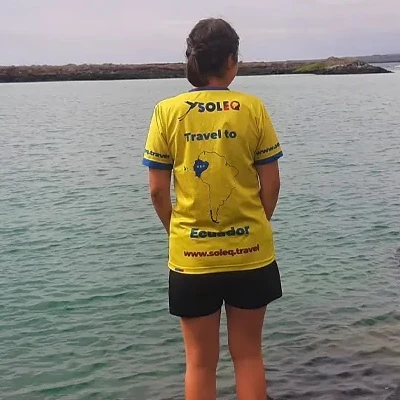
The first part of this blog series deals with the journey to Coca and the first day in the Yasuni National Park. This part is about lots of parrots, saying goodbye to the Napo Cultural Center, a two-hour canoe trip with lots of wildlife experiences, and arriving at the Napo Wildlife Center. Come with us on a little expedition and read what the Yasuni National Park has to offer.
Parrots - Hotspots
The alarm clock rang on our second day, around 5:30 in the morning, because already at 6:00 a.m. Diego and I met our guide Miguel for breakfast. Then we took the motorboat along the Rio Napo, stopping after about 30 minutes on the river to observe a crowd of green parrots nibbling on a rock. Miguel explained to us that the clay and loam that the parrots eat serves to cleanse and detoxify their stomachs. This is necessary because when the birds eat fruits, they involuntarily ingest bitter and toxic substances that damage their stomachs. So it has been our good fortune that this very spot is so popular for the parrots. Different parrot species gathered at the rock and in the surrounding trees. Not only for the eyes this spectacle was something special, also for the ears a new acoustic experience was offered, because the parrots squawked and paced unmistakable.
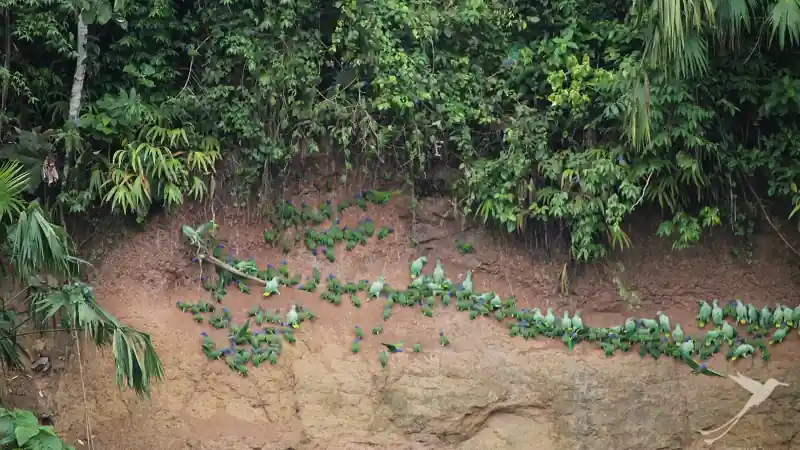
The trip by motorboat to the second parrot spot took ten minutes. This time, however, we did not observe the parrots from the boat, but walked directly into the jungle. We walked for about 10 minutes until we reached a wooden cabin with benches. Diego, Miguel and I were the first ones there, no other tourists and no parrots were to be seen yet, so we were able to get the best seats in the front row. The entrance fee for the observation site was 20 US dollars per person. As time went by, more tourists came and quietly squatted on the benches, and we could hear the parrots flying from branch to branch and slowly approaching the ground. The ground is equipped with a drinking place and also soil to clean the stomach, so the birds fly towards the ground. Unlike the first parrot hotspot, this one was mostly red parrots, called scarlet macaws.
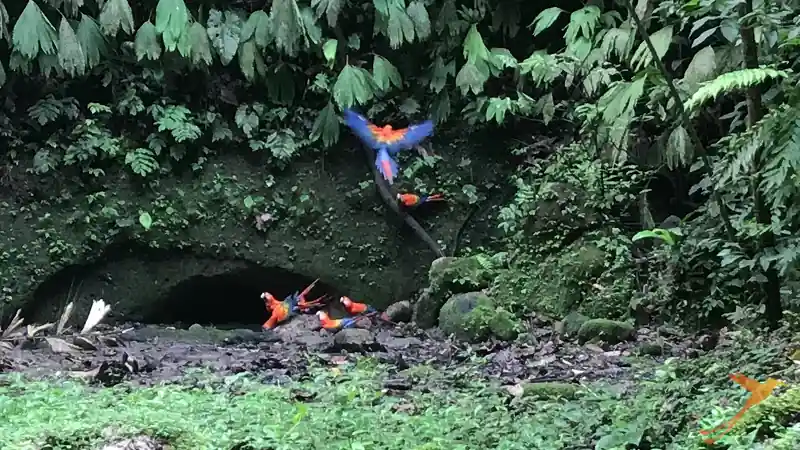
Fortunately, Diego and I also saw another species of bird. This one was much smaller than the scarlet macaws, and the parrots wore green plumage. After watching the natural spectacle for a long time, Diego, our guide Miguel and I left the birding hotspot and returned to the Añangu community by motorboat.
The Añangu Women Project
The Añangu women founded a project several years ago, which consists of continuing to celebrate ancient traditions. Diego and I had the opportunity to visit the project and learn about the exciting culture of the Añangu. In a hut, which is the meeting room, an indigenous woman introduced us to old traditions and explained more about weapons used to hunt animals. We also learned about festivities, diet, beliefs and much more. It was very exciting and definitely an encounter that I will not forget so quickly, because my ideas and expectations of how the indigenous people live did not match the reality, so it was a very enriching experience for me. After visiting the project for about an hour, tasting hunting techniques and freshly prepared food ourselves, as well as watching a traditional dance, we had lunch, packed our things and then left the Napo Cultural Center.
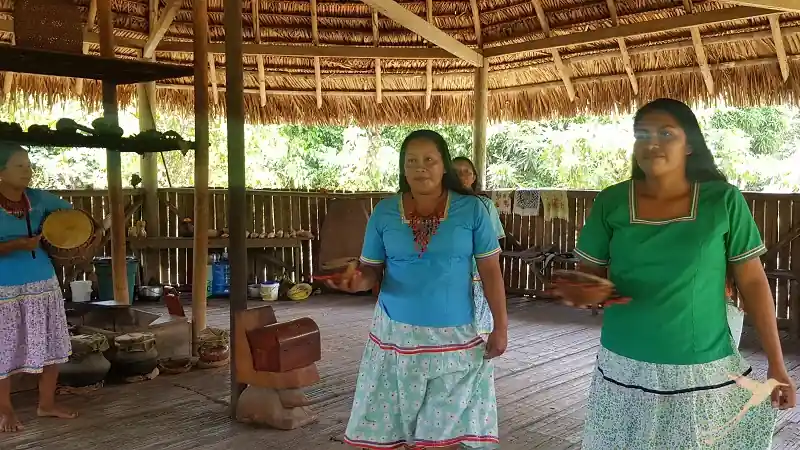
In my opinion, the Napo Cultural Center is especially suitable for families with smaller children, because there is a lot of space to play and discover, and besides the fascinating flora and fauna, the project of the Añangu women with all the explanations about their culture is interesting for children.
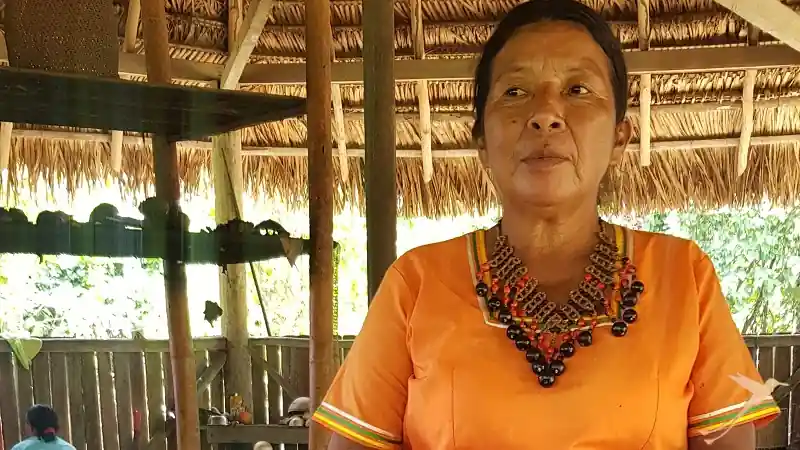
The way to the Napo Wildlife Center
To get to the Napo Wildlife Center, we took a motorboat for about 20 minutes along the Napo River to the east. The Napo Wildlife Center is also run by the Añangu community. Since the river “Añangu Creek”, which leads to the lodge, is not deep enough for motorboats and to ensure the protection of the animals, everyone who wants to get to the lodge has to change from the motorboat to a canoe at the “Añangu Boat-Stop”. Here we have the opportunity to stretch our legs and use the restroom before we go on a two-hour canoe trip. Miguel and our helmsman Jonathan drove us together with our luggage to the lodge.
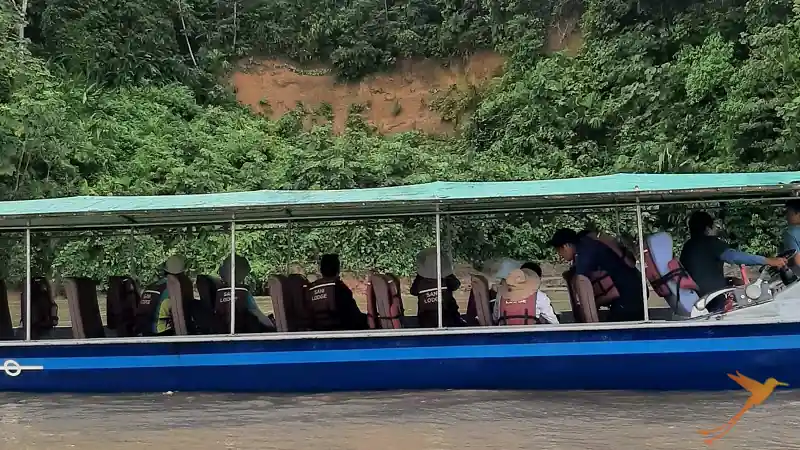
On the way we were lucky to see various birds, monkeys and beavers amidst the diverse flora. Around 4:30 p.m. we arrived at the lodge, were welcomed again with a cold fruit drink and could then move into our room.
Diego and I must have hit the jackpot here, because we slept in a suite. Diego enjoyed his free minutes in the Jacuzzi, whereas I explored the area.
While watching the lagoon “Añangu” and photographing two birds, I noticed that the rainforest next to me was moving a surprising amount. So my attention was on the rustling leaves, and soon my patience paid off as a family of monkeys came into view. Incredibly close were the squirrel monkeys, and gave me both the most unexpected and best jungle experience of the whole trip.
We ended the day with dinner at the Napo Wildlife Center and then quickly fell asleep, because the next day would start early again.







